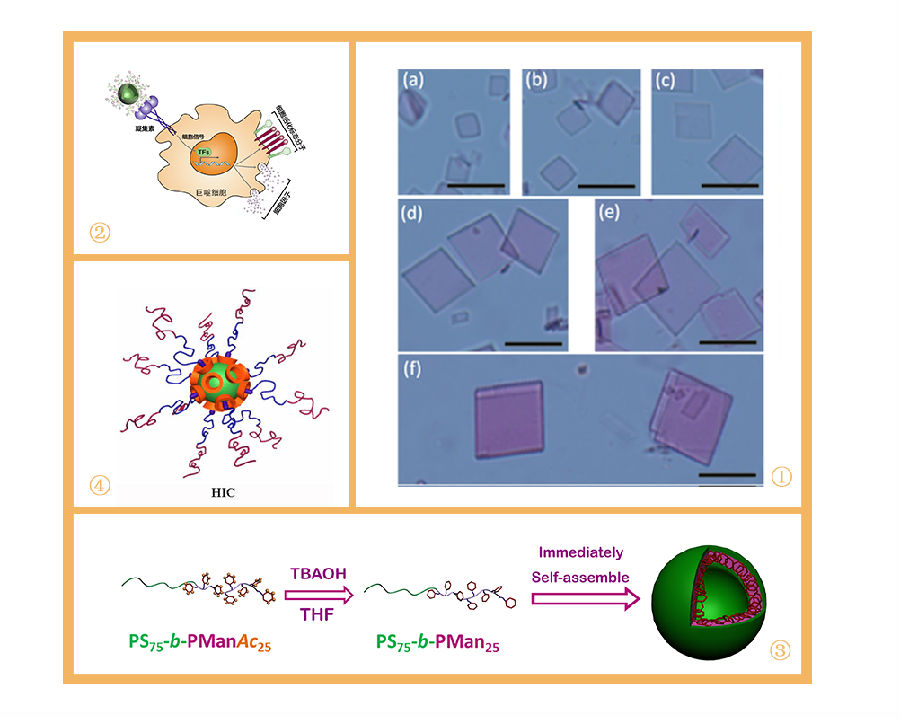
1. Precise protein self-assemblies based on carbohydrate-protein interactions
Carbohydrates are one of the most important biomacromolecules. The recognition between carbohydrate and protein is an important and basic driving force for self-assembly in living organisms. However, the interaction was, to some extent, overlooked in previous supramolecular studies. We found that some proteins could self-assemble into regular structures of nano or micro-meter scales, including crystals, nanotubes, two dimensional sheets etc., when some supramolecular interactions were introduced. Based on this progress, a new research project has been developed in our group: precise protein self-assembly driven by multiple non-covalent interactions.
2. Immunological functions of self-assembled glyco-macromolecules
Cancer immunotherapy has become the forefront of biomedicine research field nowadays. Meanwhile, the immunological functions of oligosaccharides and glyco-conjugates have been revealed progressively. Our new research shows that our designed glyco-assemblies can induce transformation of macrophages from immunosuppressive phenotype into immunostimulative ones, which indicates the bright future of glycol-assemblies in cancer immunotherapy. In this area, we will design and prepare various glyco-assemblies, and then try to understand how the immunological functions depend on the hierarchical structures of the assemblies. finally we will try to explore the possibility of developing new materials based on the glyco-assemblies for cancer immunotherapy.
3. Macromolecular self-assembly driven by chemical reactions on sugars
Macromolecular self-assembly driven by chemical reactions has drawn great attention for years. Meanwhile, there are many well-studied reactions in carbohydrate chemistry. However, the possible contribution of these reactions to macromolecular self-assembly has been overlooked for a long time. We first realized self-assembly of glyco-polymers via the protection-deprotection reaction on sugars. Our recent research results further revealed that this macromolecular self-assembly driven by carbohydrate chemistry could be a new promising method in constructing sugar-containing nanostructures with desired functions..
4. Macromolecular self-assembly driven by supramolecular chemistry
Prof. Jiang et al has developed a new strategy for macromolecular self-assembly leading to a series of "non-covalently connected micelles (NCCMs)" based on complimentary homopolymers. Recently, the strategy has been developed after introducing some new supramolecular interactions such as inclusion complexation. We will try to develop this strategy further, aiming at obtaining nano-structures with multiple responsiveness and potential applications
